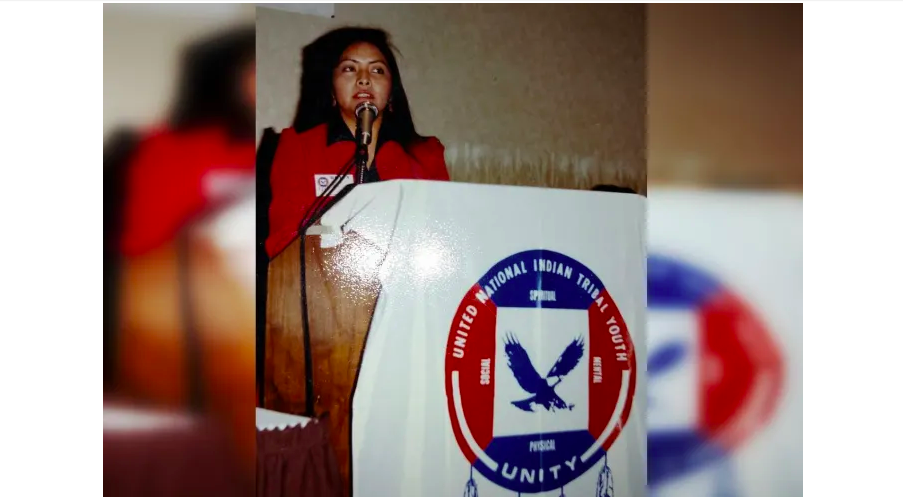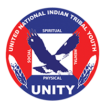
A few history-making tribal leaders have one thing in common: A commitment early on to make a change.
Brian Weeden, the youngest chairman to date for the Mashpee Wampanoag Tribe in southeastern Massachusetts, and Vivian Juan-Saunders, the first chairwoman of the Tohono O’odham Nation in southern Arizona, both had the ambition and commitment to help their tribes in any way they could. They sought out helping the youth by joining or creating organizations that benefited them.
“I figured I needed to be the boots on the ground and a lot of our elders were happy to see a young person stepping up for our community,” Weeden said.
He helped create Mashpee Wampanoag’s youth council, which participated in a well-known national Native youth organization. Through being an affiliated youth council, Native youth “engage in annual projects in four areas – cultural preservation, environmental awareness, healthy lifestyles, and community service.”
Weeden, 28, said being one of the youngest tribal leaders in the country feels like “our generation is finally getting our chance to show everyone else what we’re made of.”
While campaigning for chairman this year, he worked temporarily as a custodian at the Kenneth C. Coombs School in Mashpee, Massachusetts, for COVID-19 cleaning. It was a job he took because it aligned with his passion for working with youth. And he recalled an enlightening conversation with a kid that showed him children were interested in what’s happening in their communities.
The kid asked if Weeden was going to be chairman, after Weeden responded with uncertainty, the kid gave him a sure answer that he would.
“That’s what it’s always kind of been about for me is the children and our young people and providing the service to the community at large,” he said.
Before Weeden met requirements to run for tribal council — candidates had to be at least 25 — he dedicated his time to his community. He served and continues to serve on numerous boards and committees such as the Mashpee School Committee, historical commission, conservation commission, environmental oversight commission and a special commission that is currently investigating the Massachusetts seal and motto.
Weeden was also the first northeast area representative for United National Indian Tribal Youth’s executive committee and later was elected as co-president and trustee. He also served as co-vice president of the National Congress of American Indians Youth Commission.
He said his commitment through committees, commissions and boards is what got him to where he is today and he advised youth to do the same if they are thinking of becoming a leader in their communities.
“You get there because of your blood, sweat and tears along the way. And I think that your community will recognize that and one day it’ll pay off and you’ll be in one of these positions to hopefully lead your tribe,” he said.
In Arizona
The first woman to chair the Tohono O’odham Nation, Vivian Juan-Saunders, also leveraged youth leadership opportunities over the years that led her to her former role. The now 61-year-old had a similar work ethic as Weeden and a goal to be part of tribal politics.
She began as an intern for former Chairman Josiah Moore and later was a community representative and served on the district council. J.R. Cook, who had been the executive director for UNITY for 37 years, also mentored her while she was at the organization, where she also served on the board.
When she set her sights on running for Chair she felt her outside experience could be beneficial to the tribe and wanted to be of service to the people. She ultimately was elected in 2003, her term ended in 2007, and credits her time at the organization as shaping her term as chairwoman. She said she learned about strategic planning, decision-making, and presented positive mental attitude training sessions throughout the country.
“I made every effort to communicate to all levels within our government programs, districts, other elected officials,” she said about her time in tribal leadership.
And during her campaign, she realized the impact it could have on young women. She thought back on how the historic run coincided with what she’s done before. She said she was the first female president at her school’s Future Farmers of America chapter and was the first sixth-grader, along with her friend, to wear pants at school. It was rare for women to wear pants before the 60s and 70s because it resisted social norms, according to the Huffington Post.
“I didn’t realize I had started early. Then being elected to the Chairwoman, they didn’t know what to call me because in our constitution it’s chairman,” she said.
Today, she is still in tribal politics and represents the Chukut Kuk district on the tribe’s legislative council. Additionally, she is on the appropriations, domestic affairs and human resources development committees.
She said her experience with UNITY and being around other Indigenous youth who had the same dreams, goals, and aspirations, was extremely encouraging. She said organizations and conferences can be influential for youth today to stay on track and motivated.
“[Youth] just need to come together to see other youth in action and understand you’re part of this chain linking that innovation and change in tribal communities,” she said.
Mary Kim Titla, executive director for UNITY, said many youth participants like Weeden and Juan-Saunders go back to their communities and use what they learned at the organization.
“[Brian] encourages young people to take matters into their own hands, and to use their voices and to start getting involved now,” she said.
Titla said so many people have been positively affected like her when she asked her parents 40 years ago to attend her first UNITY conference in Oklahoma City. She later served on the council of trustees for more than 30 years.
“I tell people it’s hard to describe UNITY because it’s like going to Disneyland. You can talk to people all day long about Disneyland, but until they go there, they won’t experience that magic. And that’s exactly what UNITY is; it inspires hope and changes lives,” Titla said. “And we have heard time and time again from people all over the country who say UNITY changed my life.”
Titla said bringing youth to the forefront is a powerful asset because it allows them to directly connect to their generation.
“When we allow them to use their voices and give them a platform, they can reach their peers in ways adults can’t,” she said.
And many can benefit with more youth involvement.
“It’s important to tap into the talent that we have out there because they have some great ideas, and they have the energy to really help improve their communities,” she said.
Indian Country Today is a nonprofit news organization. Will you support our work? All of our content is free. There are no subscriptions or costs. And we have hired more Native journalists in the past year than any news organization ─ and with your help we will continue to grow and create career paths for our people. Support Indian Country Today for as little as $10. Sign up for ICT’s free newsletter.

